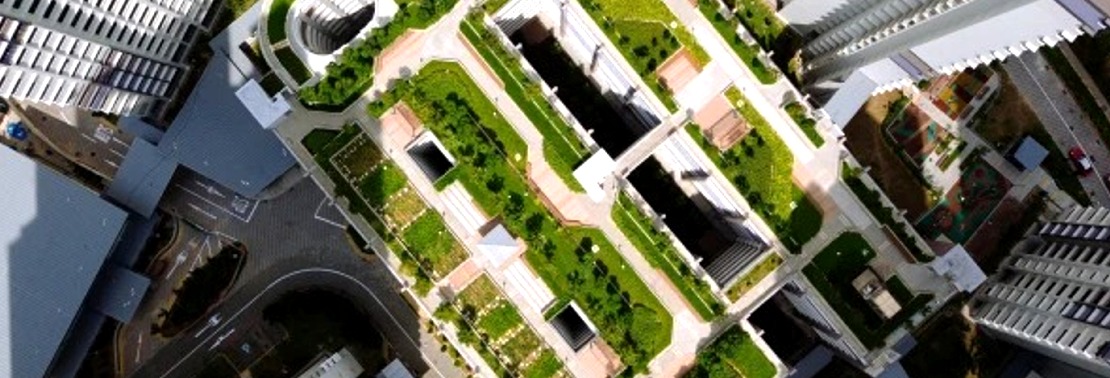Daniel Johnson of The Conversation writes:
More than half of the world’s population currently lives in cities while projections show an increase to two thirds by 2050. Many people living in small areas means large amounts of waste, high resource consumption and loads of energy use. We can combat these issues with the ideas behind the circular economy. If we were to envision our cities as circular cities, how would they look? Green. And why? Because achieving a circular economy means using nature as a template. With the help of green infrastructure, we can take nature as the example and transform our cities into circular cities.
Greening roofs, mitigating waste
“A circular economy is an economic system aimed at eliminating waste and the continual use of resources. Circular systems employ reuse, sharing, repair, refurbishment, remanufacturing and recycling to create a closed system, minimising the use of resource input and the creation of waste, pollution and emissions.” Wikipedia
Achieving a circular city means ensuring the mitigation of waste. Green infrastructure reduces waste in the construction industry by increasing the longevity of exterior surfaces. With greening, roofs survive longer against harmful weathering and intense sunlight. The lifespan of conventional flat roofs can even be doubled with greening. As one city with a long tradition of greening roofs, Berlin even has green roofs reaching approximately 100 years in age.
Green facades also play a similar role by reducing the maintenance requirements of conventional facades due to the protective layer against sunlight and high temperatures. By using these nature-inspired measures in green infrastructure, cities reduce waste in the construction industry and become more circular. Making our buildings last longer means less waste and helps us approach the idea of circular cities.
China’s “sponge city” initiative helps cities absorb rainwater, reduce flooding, ease pressures on municipal treatment systems and increase their water supply. Recycling runoff mimics nature’s own circular way of dealing with rainwater, offering a cleaner and more holistic approach for growing cities.
Berlin’s Potsdamer Platz is another prime example. Rather than a sponge system, the urban pools take advantage of an interconnected system of green roofs, urban spaces and a constructed treatment pond to recycle and filter excess stormwater for irrigation and indoor plumbing.
Considering the numerous benefits, it is clear that cities investing in green infrastructure become more circular and tackle several issues at once. Studies have already shown how economically the benefits do outweigh the costs of such systems, and it is obvious that there is much to gain in mimicking nature and transitioning to circular cities of the world.
Join us in November for our 5th biennial Virtual Summit!
“Cooling a Warming Planet with Living Architecture”
Read more: Circular cities of the world: what can green infrastructure do?
 Greenroofs.comConnecting the Planet + Living Architecture
Greenroofs.comConnecting the Planet + Living Architecture






